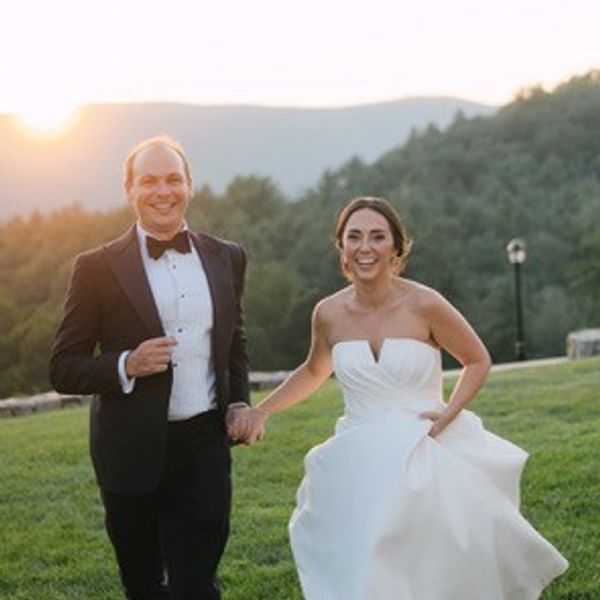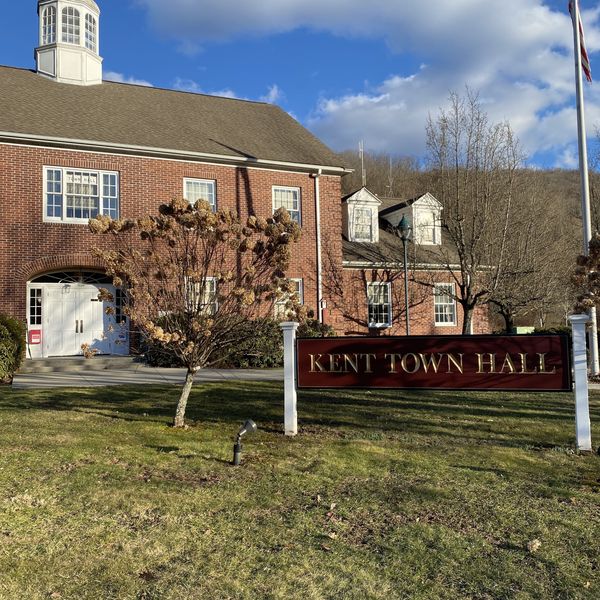Latest News
Kirk’s murder and the cancel culture
Sep 17, 2025
Over the last century in the United States what has become known as cancel culture has moved from the political right to the political left.
The Red scares of the 1920s and 1950s were a conservative phenomenon that blacklisted, deported, and even imprisoned people for real or suspected leftist political views that were equated, often wrongly, with treason and disloyalty.
Today cancel culture is a leftist phenomenon that contrives no pretense about treason and disloyalty. It seeks to silence conservatives simply because they are politically objectionable. The shooter who assassinated Turning Point USA founder Charlie Kirk, the conservative advocate of free speech and sincere dialogue with the other side, was the exemplar of cancel culture, illuminating where it will take the country.
Being allied with cancel culture, most Democratic officials don’t want to examine the Kirk assassination too closely. Democrats, including Connecticut’s U.S. Sen. Chris Murphy and U.S. Reps. John B. Larson and Jahana Hayes, seem to prefer to attribute the assassination to the country’s gun problem, so as to put Republicans, defenders of Second Amendment rights, on the defensive. During an angry confrontation on the floor of the House of Representatives on Sept. 10, Hayes objected to a call for prayers for Kirk and his family, shrieking, “Pass some gun laws!”
There may be room for more gun laws on the federal level, but the assassination of Kirk is not an argument for them. Kirk appears to have been killed by an ordinary bolt-action hunting rifle, not the sort of semi-automatic rifles Democrats delight in mislabeling as “assault weapons” as they seek to outlaw them. Is the country now to outlaw even rudimentary rifles while nearly all gun crime is committed with handguns?
Connecticut’s gun laws already are nearly the most restrictive in the country and the state’s problem is not that it lacks laws but enforcement.
Connecticut’s gun laws already are nearly the most restrictive in the country and the state’s problem is not that it lacks laws but enforcement. Two years ago the state Office of Legislative Research reported that nearly two-thirds of criminal charges involving guns in Connecticut were routinely dropped in plea bargaining to get convictions on related charges considered more serious, like robbery.
If Connecticut ever took gun crime seriously it would make the gun charges the most serious and upon conviction impose mandatory sentences of life without parole. But then most new imprisonments would involve impoverished members of racial minorities, and legislators might be asked where all the poverty keeps coming from despite all the money they spend in the name of reducing it.
While from the beginning American political rhetoric often has been venomous, it never has been as venomous as it is today.
President Trump is a major perpetrator of it but he is far outnumbered by its perpetrators among the Democratic Party’s looney left in government and academia, and at least Trump hasn’t turned his office into an agency of cancel culture. His many firings of executive branch Democrats are matters of political patronage, explained by the great insight of Kentucky Sen. Alben Barkley, a Democrat, during the 1948 presidential campaign: “What is a ‘bureaucrat’? A ‘bureaucrat’ is a Democrat who holds an office some Republican wants.”
What can stop cancel culture from getting even more murderous and totalitarian? Only a return to what Judge Learned Hand called the spirit of liberty:
“The spirit of liberty is the spirit which is not too sure it is right. The spirit of liberty is the spirit which seeks to understand the minds of other men and women. The spirit of liberty is the spirit which weighs their interests alongside its own without bias. The spirit of liberty remembers that not even a sparrow falls to earth unheeded. The spirit of liberty is the spirit of Him who, near 2,000 years ago, taught mankind the lesson it has never learned but never quite forgotten: that there may be a kingdom where the least shall be heard and considered side by side with the greatest.”
Charlie Kirk pursued the spirit of liberty. May others still dare to follow him.
Chris Powell has written about Connecticut government and politics for many years.
Keep ReadingShow less
A large American flag was raised in front of Canaan Fire Co. Thursday, Sept. 11, in memory of the victims of the attacks in 2001.
Patrick L. Sullivan
NORTH CANAAN — The observance in North Canaan of the Sept. 11, 2001, terror attack was muted.
On Thursday morning, Sept. 11, a very large American flag hung outside the firehouse, and inside were exhibits detailing the timeline of the day and various items, including relics from the rubble at the World Trade Center and examples of firefighting equipment.
A table held a looseleaf notebook with the names of the dead from the attacks, plus the names of service members who died during the War on Terror, including first responders and service members killed up to the Abbey Gate bombing in Afghanistan on Aug. 26, 2021.
Anyone could simply sit down and start reading the names, making sure to indicate where they stopped for the next reader.
In previous years the names were read over a loudspeaker, and the First Litchfield Artillery Regiment set up a cannon to be fired off at critical moments such as when the hijacked planes hit the Twin Towers.
But the 2025 version of the ceremony was much quieter.
Keep ReadingShow less
SHARON — The public hearing for the development of a commercial district office and event space for local arts nonprofit Low Road Sharon closed on Sept. 10 with a note of reconciliation between neighbors and the applicant.
The plans involve demolishing the two existing buildings at 1 Low Road and replacing them with two structures facing each other across a central green. A public footpath will connect Lovers Lane to Low Road.
Thomas Dore, who had been outspoken in his opposition to certain aspects of the plans in the two previous hearing sessions, took a propitiatory tone during his testimony on Wednesday evening. “I think we’d like to support it,” he said, though he reaffirmed his wish that the impact on Lovers Lane be mitigated and reiterated his disapproval of the footpath intended to run alongside Beardsley Pond Brook.
The footpath has been a sticking point throughout the hearing process. Several Low Road and Lovers Lane neighbors have expressed trepidation over how the path might be used, and how it may impact foot, vehicular and even off-road vehicle traffic on Lovers Lane.
Lovers Lane resident Robin Leech, who had spoken at previous hearing sessions, voiced his worries about the path, describing it as a potential “lure” for people to travel between Lovers Lane and Low Road. He also said the “community at large” is concerned about a “land bridge to the other holdings,” referring to Jasper Johns’ other properties in town that are planned to be used for an artist colony in the future.
Selectman Lynn Kearcher spoke up about the potential for increased traffic on the narrow and half-paved Lovers Lane. “As a native of Sharon, I’m very protective of our residents” on the street, some of whom have lived there for decades, she said.
Representing Low Road Sharon, Conley Rollins affirmed the project design is meant to have minimal impact on Lovers Lane, and that the downtown facility is planned to remain largely separate from the future artist retreat. He reiterated from previous meetings that the intended use of the development is staff offices and occasional public programming. “This is in the commercial district,” he said.
As for the footpath, Rollins said he was happy to ban ATV or Gator use on the path except for occasional maintenance conducted by staff. P&Z alternate Jill Drew questioned whether the path is necessary at all to the broader project. Rollins replied, “we have felt that it’s additive to the project” as a way to enjoy a scenic section of the property but is not strictly necessary.
After closing the hearing, the Commission briefly deliberated conditions to place on an approval. P&Z Secretary Stanley MacMillan Jr. suggested that the pathway be cut off about halfway across the property. Vice Chair Betsy Hall added that it should be incumbent upon Low Road Sharon to instruct attendees of any events to not travel through Lovers Lane.
The Commission ultimately decided to table any decision while the town attorney reviews the application. P&Z will resume the conversation at its next regular meeting on Oct. 8.
Keep ReadingShow less
A rendering of the proposed 13-unit affordable housing building that was discussed at Thursday’s hearing of the Kent Planning and Zoning Commission.
Ruth Epstein
KENT — Deciding to get an opinion from its engineer, the Planning and Zoning Commission Thursday continued the hearing until next month on Kent Affordable Housing’s application for the 13-unit affordable housing project off Maple Street despite pleas from KAH board members.
Justin Potter, chairman of KAH, went through a detailed presentation of the plan, which calls for a single building with an elevator to be located adjacent to the South Common affordable housing complex on 1.15 acres now owned by the town. Once all approvals are received, the town will pass the property to KAH.
Potter began by explaining the group has been working on this project for more than two years, aware of the great need for more affordable housing in town. There are currently 37 affordable units with 24 at South Common and three separate buildings at Stuart Farms. Rents range from $400 to $1,400. Typically, there are between 40 and 60 families on the waiting list and 70% of business owners say they have trouble with staffing because rents are too high for employees.
“In July, the figure for the median house price in Kent was $665,000,” Potter said.
The property for the project is near the public works garage and recreational space for Park and Recreation. Potter said those two entities would not be infringed upon.
Laura Crowley, an architect with Schader Seinau Associates, hired by KAH, gave some details on landscaping, lighting and fire alarm systems. There will be two- and three-story walkouts from the building. Sidewalks will connect the building to the nearby park so residents can access it safely, as well as to South Common. She said conceptual approval has been received from the Sewer Commission.
Potter talked about the parking, which is being proposed at 18 spaces for the building that will contain nine one-bedroom apartments and four two-bedroom units. The proposal will seek reserved spots for the tenants, with additional parking provided at South Common, where there is an abundance of space.
When discussing fire safety, Crowley said all fire and building code requirements have been met. Potter said they would seek emergency access through the transfer station, which has been given the nod by the fire department and fire marshal.
Fire chief Alan Gawel spoke about needing access for dealing with a three-story building and suggested perhaps the gravel parking area near the tennis courts could be designated for the ladder truck if needed. First Selectman Martin Lindenmayer took strong exception, saying that was never part of the discussion when the whole proposal was formulated. “This is getting out of hand,” he said strongly. “We need more recreation. We already discussed this.”
Potter responded, “There’s a balancing of different priorities. We can work out details for making things easier for the fire department.”
When Commission Chairman Wes Wyrick said he had some concerns with stormwater runoff, KAH’s engineer Roy Seelye of Cardinal Engineering said an analysis showed a small increase in runoff, “but because of its proximity to the brook, I didn’t think much about it.”
Donna Hayes, former zoning enforcement official, asked commissioners if they thought their engineer should look at the drainage. Members were polled and said they thought that was a good idea.
Current Land Use Administrator Tai Kern said if the commission’s engineer is brought in, the cost is borne by the applicant. Potter said he didn’t see the need since the application went through scrutiny by the Inland Wetlands Commission, which gave its approval.
KAH member Gregg Sheridan said, “KAH has been a responsible developer in Kent since the 1990s. What we’ve paid Cardinal is formidable. To put this cost on us, as a nonprofit, is unreasonable.”
Kern responded, “Someone has to pay them.” Sheridan said, “I expect a partnership. It’s not unreasonable for the town to take on some of the cost.” Potter said time is also a concern, since the matter won’t be discussed for another month.
When Seelye said it was his engineer’s intuition that there would be little increase in stormwater drainage from this project, commissioner Sarah Chase said, “We’ve never worked off intuition. It’s like working off assumption and the commission should never do that.”
Keep ReadingShow less
loading








